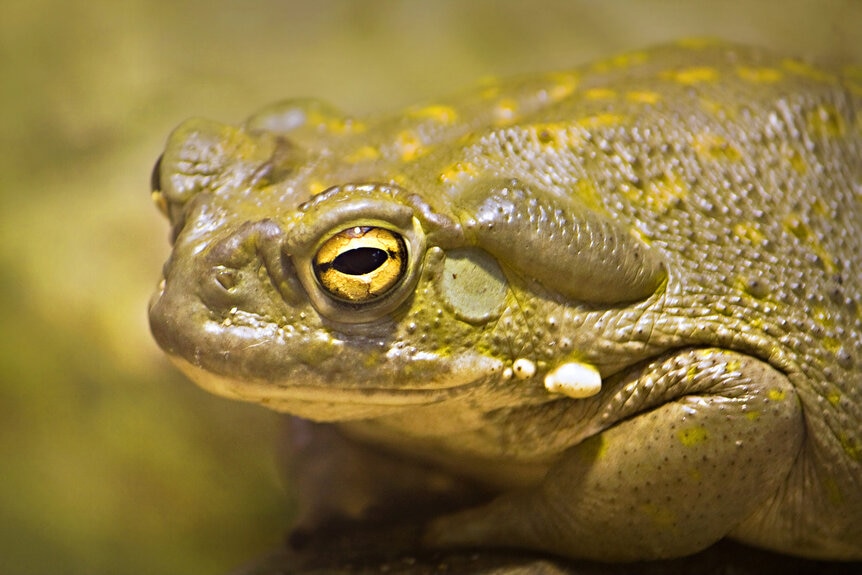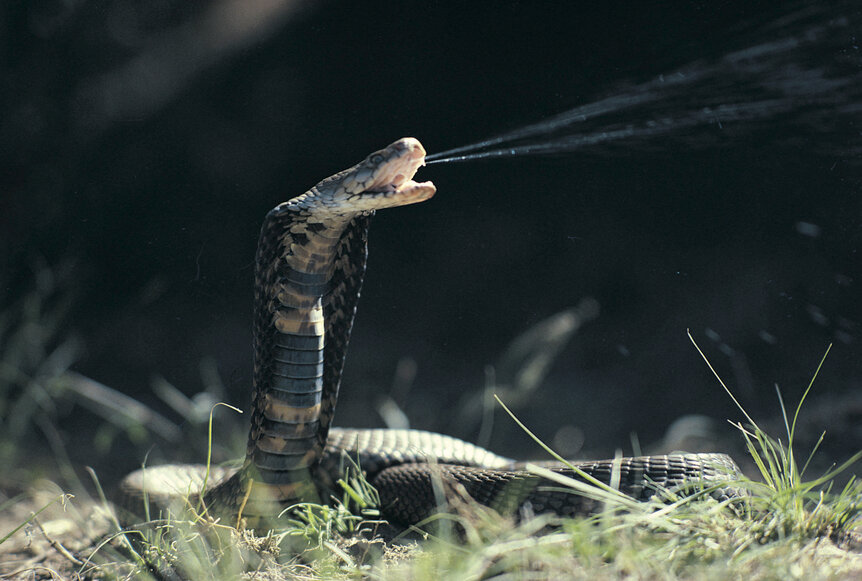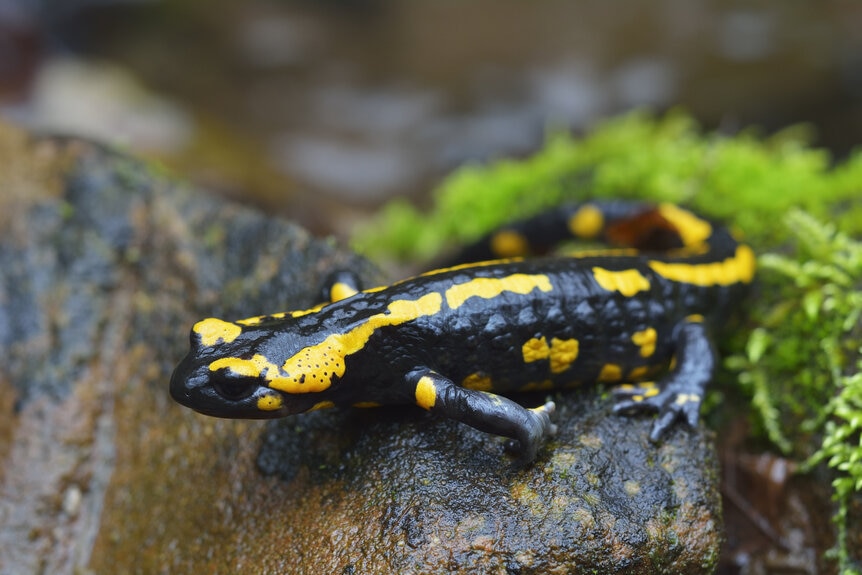Create a free profile to get unlimited access to exclusive videos, sweepstakes, and more!
Can real animals make drugs that get you high, like Dune's sandworms?
On Earth, we don't have any animals that can make a drug as powerful as Spice Melange. However...

It's been said that he who controls the spice, controls the universe. Dune's spice melange is so powerful, economic control over it drives the empire. Hailing from the desert world of Arrakis, the spice is a mind-altering substance with both physical benefits and addictive qualities. Mining the material is dangerous, owing to the planet's massive sandworms which are drawn to rhythmic vibrations like the overland treading of people, or the movements of mining equipment.
Later books in Frank Herbert's series reveal that the worms, however, are crucial to the existence and production of spice. Their larvae, known as sandtrout, seek out water that mixes with their excretions. The resulting mass creates gases that eventually explode onto the surface. The pre-spice mass, when exposed to the air and sun, becomes melange. Sandworms — can't mine with ‘em, can't control a galactic empire without ‘em.
On Earth, we don't have sandworms, at least not the type that will follow your footsteps and swallow you whole. (No one tell Kevin Bacon.) But we do have animals that create intoxicating substances and we've been using them to get high for hundreds or thousands of years.
LICKING TOADS
It's become almost an urban legend that licking a toad can result in hallucinogenic effects. Stories of people putting down the beer and picking up toads have been around for decades, if not longer. It's like a fairy tale gone wrong: The princess kisses the frog and gets more than she bargained for.
There is some truth to the legend, however. In fact, some toads have been part of indigenous ceremonies for a long time, and it all comes down to a compound called bufotenine.
This compound takes its name from a genus of toads in which it is commonly produced. The chemical structure of bufotenine is similar to other psychedelics found in some mushrooms and plants. Species such as the Colorado River toad excrete bufotenine from glands as a defense mechanism, but they aren't looking to get their predators high.
The excretions also harbor cardiac glycosides which impact heart function. Toad excretions can be obtained by pressing on the glands, which are located near the ears, until a milky substance oozes out. The excretions are then licked or dried and smoked. The trouble is, a user has no way of knowing how much of the toxins are present in a given excretion. So, use can result in a psychedelic high or death, and you won't know until after you've licked your last toad.
We don't know about you, but unless you're an insect, being killed by a toad seems like one of the least cool ways to go out. Maybe don't.
VENOM
Much like the noble river toad, it seems as though any compound synthesized by an animal capable of killing you, might also get you high. Though, reading over that last sentence again only reiterates how much of a bad idea it probably is.
Snake, scorpion, and wasp venoms have all been used as recreational substances, though the literature on these practices isn't very robust. Probably because there are easier ways to get your kicks than capturing a cobra to steal its murder juice.
Still, individual case reports have been documented of individuals, primarily in India, who seek out snake dens for the chance of being bitten. Participants are bitten either on the foot or on the tongue or mouth. According to those reports, the bite is followed by convulsions and possible loss of consciousness. Thereafter, users experience a calmness or euphoria lasting up to several weeks.
In some cases, snake bites are used as an alternative to opiates, and the incidence of opiate use in the intervening period is reduced or eliminated. Moreover, snake bites don't appear to have addictive qualities, though this could relate to the comparatively rare instances of use and it's difficult to make any hard and fast conclusions based on the sparse literature.
There have been reports, however, of individuals developing a tolerance to bites, necessitating more frequent visits to snake dens.
Interestingly, those individuals who reported using recreational snake bites, often cited the cobra as the snake in question. This introduce some doubt into the veracity of their accounts, as cobra bites are often fatal. This suggests that either the users were mistaken about the species or that there's something more going on.
In at least one instance, a visit paid to a snake den revealed that the cobra was actually a rat snake. Rat snakes resemble cobras but are non-venomous, suggesting that the euphoria felt in these cases may have been a placebo.
All things considered, it's probably best not to intentionally be bitten by snakes. It could kill you, it could do nothing, and the snake probably won't like it.
SALAMANDERS
In 1995, an article in the magazine Mladina told of a Slovenian psychedelic drink known as salamander brandy. Reportedly, the drink is reportedly constructed by dumping fire salamanders (Salamandra Salamandra) into a pod of fermenting fruit, wherein their natural toxins are excreted. Otherwise, a group of salamanders can be dropped into finished brandy or suspended above boiling brandy wherein the steam causes the animal to struggle and drop toxins. In either case, the result is the same, the salamander's natural toxins are infused into an alcoholic drink for consumption.
The veracity of this substance is under some dispute, with residents of the relevant regions considering it a despicable act, something which no brewer should do, and no one should drink. What isn't in question is that some salamanders do excrete a toxin which could potentially serve as the basis for an intoxicant. Salamanders excrete tetrodotoxin, a neurotoxin which affects the nervous system and can cause paralysis.
Ingestion of tetrodotoxin causes numbness, dizziness and muscle paralysis. This paralysis can eventually lead to the lungs, causing death. This deadly compound is also found in other animals, including pufferfish and the blue-ringed octopus. In some newts, tetrodotoxin is actually manufactured not by the animal, but by symbiotic bacteria.
Moreover, the level of toxin varies across species and populations, owing to an evolutionary arms race between the salamanders and predators. So, much like with toads, consuming salamander toxins can be a bit of a crap shoot which is at least as likely to kill you as it is to give you a buzz.
In that way, harvesting substances from animals for recreational use isn't all that different from harvesting spice on Arrakis. When you tangle with a toad, a snake, a salamander, or the Shai-Hulud, you take your own life into your hands.





























